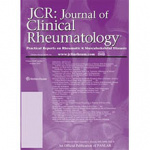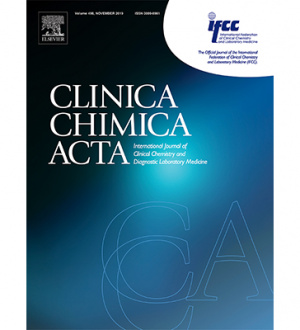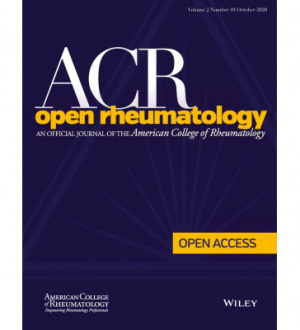 Цели:
Цели:
Целью этого исследования было изучение клинических взаимосвязей мутаций второго аллеля и влияния генотипа и особенностей проявления на резистентность к колхицину у детей с семейной средиземноморской лихорадкой (ССЛ), несущих по крайней мере один вариант M694V.
Методика:
Были проанализированы медицинские карты пациентов с диагнозом ССЛ, у которых была обнаружена по крайней мере одна мутация аллеля M694V. Пациенты были сгруппированы в соответствии с генотипом: гомозигота M694V, сложная гетерозигота M694V с мутацией экзона 10, сложная гетерозигота M694V с вариантом неизвестной значимости (VUS) и гетерозиготы M694V. Тяжесть заболевания оценивалась с помощью международной системы оценки тяжести ССЛ.
Результаты:
Среди 141 включенного в исследование пациента гомозигота M694V (43,3%) была наиболее частым генотипом MEFV. Клинические проявления ССЛ при постановке диагноза существенно не отличались в зависимости от генотипических изменений, за исключением гомозиготы M694V. Кроме того, гомозиготный генотип M694V был связан с более тяжелым заболеванием, с более частыми сопутствующими заболеваниями и колхицинорезистентным заболеванием.
Более низкий показатель тяжести заболевания наблюдался у сложных гетерозигот с VUS, нежели у гетерозигот M694V (медиана 1 по сравнению с 2, р = 0,006). Регрессионный анализ показал, что гомозиготный M694V, артрит и частота приступов были связаны с повышенным риском развития колхицинорезистентного заболевания.
Выводы:
На клинические проявления ССЛ при постановке диагноза с аллелем M694V преимущественно влияли мутации M694V, а не второго аллеля. Хотя гомозиготность M694V была связана с наиболее тяжелой формой, наличие комбинированной гетерозиготности с VUS не влияло на тяжесть заболевания или клинические особенности. Гомозиготный M694V сопряжен с самым высоким риском развития колхицинорезистентного заболевания.
Kisaoglu, H., Baba, O., Kalyoncu, M.
doi: 10.1097/RHU.1 953
Genotype-Phenotype Associations of Children With Familial Mediterranean Fever in a Cohort Consisted of M694V and Implications for Colchicine-Resistant Disease
Objectives:
The aim of this study was to investigate the clinical associations of the second allele mutations and the effect of genotype and presenting features on colchicine resistance in children with familial Mediterranean fever (FMF), carrying at least one M694V variant.
Methods:
The medical records of the patients diagnosed with FMF, in whom at least one allele M694V mutation was detected, were reviewed. Patients were grouped according to the genotype as M694V homozygotes, compound heterozygote M694V with an exon 10 mutation, compound heterozygote M694V with a variant of unknown significance (VUS), and M694V heterozygotes. Disease severity was assessed with the International Severity Scoring System for FMF.
Results:
Among the 141 patients included, homozygote M694V (43.3%) was the most frequent MEFV genotype. Clinical manifestations of FMF at diagnosis were not significantly different according to genotypic alterations except homozygote M694V. Besides, homozygous M694V was associated with a more severe disease, with more frequent comorbidities and colchicine-resistant disease. A lower disease severity score was observed in compound heterozygotes with VUS than in M694V heterozygotes (median 1 vs 2, p = 0.006). Regression analysis revealed that homozygous M694V, arthritis, and frequency of attacks were associated with an increased risk of colchicine-resistant disease.
Conclusions:
Clinical manifestations of FMF at diagnosis with a M694V allele were predominantly influenced by the M694V rather than the second allele mutations. Although homozygous M694V was associated with the most severe form, the presence of compound heterozygosity with a VUS did not affect disease severity or clinical features. Homozygous M694V confers the highest risk of colchicine-resistant disease.







